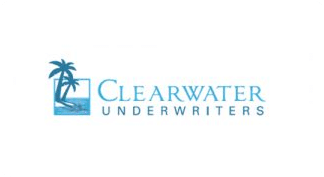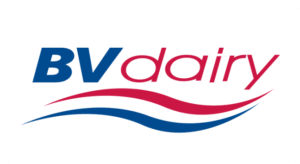

Location: Blackmore Vale and Shaftesbury, Dorset, United Kingdom
Industry: Dairy and Food Processing and Manufacturing
Website: www.bvdairy.co.uk
Founded in 1958 as a family farm in England’s West Country, BV Dairy is now a thriving modern business. Each year, the company purchases 35 million liters of milk from dairy farms within a 25-mile radius of their production facility in Shaftesbury, Dorset and turns them into dairy products for food distribution and manufacturing firms. BV Dairy’s range includes their award-winning Dorset clotted cream, as well as yogurts, buttermilk, soft cheese, and mascarpone.
Everyone loves a good mystery. Well, perhaps everyone loves to read a good mystery. Living one is something else. Just ask Wade Neller, vice president of information technologies for Clearwater Underwriters, Inc. (CUI) a 15-year-old Florida-based excess and surplus (E&S) lines insurance wholesaler. E&S wholesalers find or develop insurance programs to serve hard-to-place risks, and make coverage available through retail insurance agents who sell to the general public.
Neller’s real-life office mystery revolved around paper. “When you have a number of people accessing files from a group of cabinets, you’re going to have instances where information you’re looking for is just not there,” he says. “It could be that someone misfiled it, or maybe they’re looking at it, or it’s just sitting in a pile on their desk. It’s sometimes just a mystery where the file is.”
In some cases, the mystery wasn’t the problem. Sometimes, dealing with paper that could be found presented more of a problem than dealing with what couldn’t be. “Another issue is the whole aspect of mailing out policies,” Neller says. “Previously, we would have to print out the entire policy and mail a couple of copies. That was a job in itself – just managing the mailing.” In short, Neller says, “The paper was killing us.”
“DocStar gives us the power to add and retrieve more documents to and from the system. It increases our accuracy, efficiency, and traceability. Furthermore, this solution has plenty of flexibility that lets us tune and tweak workflows as our business processes change and grow. Most of all, the introduction of DocStar has allowed us to streamline processes and save time—notably in terms of invoice approval and delivery note processing—because it brings all of the relevant information and documentation together in one place.”
-Mark Damen, ERP Systems Manager | BV Dairy
Going with DocStar helped CUI address both of these problems. It took the mystery out of finding files. And it relieved the time and expense burden of mailing pages-thick insurance policies.
As an E&S wholesaler, the firm represents carriers in the US and abroad, as well as Lloyds of London Syndicates. “As a representative of Lloyds, much is expected,” says Guy Waters, Clearwater Underwriters senior vice president. “We have authority to accept applications, render a quote, bind coverage, issue policies and process claims.” And CUI needs a way to keep it all organized, since it frequently has to respond quickly to calls from underwriters, retail agents and others.
“The time devoted to filing was significant,” Neller says. “After you work with a file, perhaps you have to process an endorsement or something, you have to go re-file it, and that kills time too.” Neller spent a considerable amount of energy studying up on electronic document management. And one thing he found was that every time someone gets up from their desk, seven minutes of productivity is lost. “It’s easy to picture it: You get up, go to get a file, maybe run into a coworker, talk about the family, and so on,” he says. “It adds up.”
Neller’s research also included a look at other options for electronic document management – internal and external options. DocStar made the cut for a number of reasons. Top among them were the stability Neller saw within the company, as well as the AuthentiDate document authentication technology the company offers. The two are interrelated, Neller says, and contributed to his decision to go with DocStar. “With their background and capabilities, I believe they’re going to be around,” he says.
Neller even investigated the possibility of doing document imaging in house. He didn’t say how deeply he thought about it, but it’s to his credit that he felt educated enough to even consider it. He quickly learned that option brought with it considerable challenges. “First of all, with outside vendors, there is more functionality than I could ever muster on my own,” he says. “Then, if we had something developed on our own, there’s the cost issue. And what if there’s a shift in technology? Then we’d have to pay to have it done all over again. Add to that support issues, and the decision was clear.”
Actually, the support Neller has received since signing on with DocStar is something he says validates his decision. “The fact that DocStar has an R&D operation is great,” he says. “One of my favorite things about DocStar is that they really listen to their clients about features they want. We’ve had a couple ideas put out there, and they’ve been noted and they’re being looked into for the next build.”
The 25 or so people who work at Clearwater don’t interact with DocStar personnel very much. But they like the system. That’s, in large part, due to efforts of Neller and others in management. “When we went into this process, we did our homework,” he says. “We knew the key to implementing any change would be planning, planning, planning.” Under direction of Heather Waters, CUI operations vice president – someone Neller calls “the genius of operations” – the company brought together stakeholders from each department – commercial lines, personal lines, mobile homes, flood and accounting.
These individuals studied, brainstormed, tested, kicked the tires, and reviewed internal workflows and methodologies. “I went so far as to set up a test database, and we started bringing in groups for training on the test database to work out any bugs, to get comfortable,” Neller says. “Then, after six months, we went live – first with accounting.”
They chose accounting because the department reports directly to Heather, and by being able to closely monitor functionality, they’d get a better feel for how the product works, and what some of the issues were. Once accounting was fully implemented, CUI brought the rest of the departments on board. “Due to the planning, implementation went well,” Neller says. “With any new technology, you’re bound to have people bucking the system. But we worked to get comfort levels up. Once that happened, we haven’t heard any complaints.” Not even from people who have worked in a paper environment for 30 years or more.
During implementation, Clearwater introduced dual monitors to all of its customer service reps, and most of management, as well. “We took away their paper and gave them a digital workspace, instead,” Neller says. Now they have the ‘paper’ right on the second screen.
Now, walking-around time has been reduced. Answers are a click or two away. Actually, there are fewer places to walk to now. Since implementing DocStar, CUI has gotten rid of 35 five-drawer file cabinets. And by the end of the year, they will have removed roughly 70. “That’s a lot of real estate,” Neller says.
The amount of time it takes to get answers for clients – the retail insurance agencies that Clearwater Underwriters serves – also has been cut. Actually, through DocStar’s WebView feature, retail agents are able to view their policies and other documents Clearwater makes available for them using a standard, broadband Internet connection. “Documents are available to agents online,” Neller says, “and they are able to view them or download and print them anytime they want.”
For agents who prefer to contact the company by phone, DocStar still helps speed responses. “If an agent were to call up and ask a question about a policy, in a paper world, I’d have to put him on hold, and pray the document is in the file cabinet,” Neller says. “Now, we’re able to click, and there it is. DocStar lets us offer instant gratification. They don’t have to wait for the mail or wait for us to find something.”
That’s cut down printing and mailing expenses – postage and people costs. Neller describes it as an “extreme reduction in paper consumption.” With commercial insurance policies, it’s not unheard of to have a couple of hundred pages, including all of the forms. “By us not mailing these out, but making them available online, our paper consumption – not to mention printer supplies, toner, maintenance, and such – has dropped dramatically, Neller says. “And postage is way down, too.”
Clearwater still mails out a number of critical documents, such as cancellation notices and other certain specific, sensitive items. But by using the Internet access, CUI has been able to speed service and cut costs – something all businesses work toward.
Perhaps one of the least expected benefits Neller’s organization has seen from deployment of DocStar is something that started out as a challenge. “By implementing DocStar and going paperless, it really made us evaluate our workflows,” Neller says. “And that’s a good thing. You can’t have enough checks and balances.
In doing that we were able to streamline a couple aspects of our work. “That’s probably one of my favorite aspects of the change,” Neller says. “By going through and adapting our whole way of filing to an imaging system, we had to take a close look at our workflows. We struggled to create a methodology and procedure.”
“It brought the microscope out, he adds, and they ended up seeing business practices in a different light. It actually, if you will, took some of the mystery out of what CUI does.” And Neller likes that.